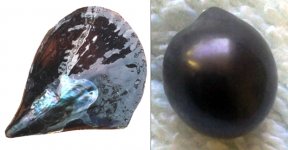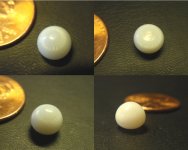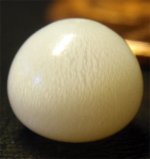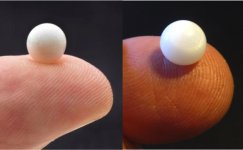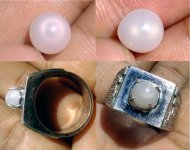SteveM
Well-known member
- Joined
- Jan 29, 2007
- Messages
- 2,026
This post originated as a reply to a more general thread, but it belongs here.
When advised that the pearl of an Indonesian strombus (conch)?locally called Kerang Kasturi?closely resembled true Nautilus pearls, I asked how in the hell they could offer such a thing with confidence, and how a nacreous shell could produce a pearl comparable with a non-nacreous mollusk. Other than to assure checking and double-checking each diver's story, keeping files over a period of years, etc. etc. I was offered this rather intriguing tidbit:
And any number of others that have come forward with their offerings, certification the responsibility of the buyer. They all look like clam pearls, and on top of that the inhabitants of Madura seem to be especially adept at turning clam and other calcareous shells into any number of rare pearl types with specialized polishing equipment.Buddhi says he has one, but it is cracked and not certified.
When advised that the pearl of an Indonesian strombus (conch)?locally called Kerang Kasturi?closely resembled true Nautilus pearls, I asked how in the hell they could offer such a thing with confidence, and how a nacreous shell could produce a pearl comparable with a non-nacreous mollusk. Other than to assure checking and double-checking each diver's story, keeping files over a period of years, etc. etc. I was offered this rather intriguing tidbit:
?if night time you can see the pearl in this shell because this pearl become lighthouse beacon and this history I got it from every diver in the small island?

